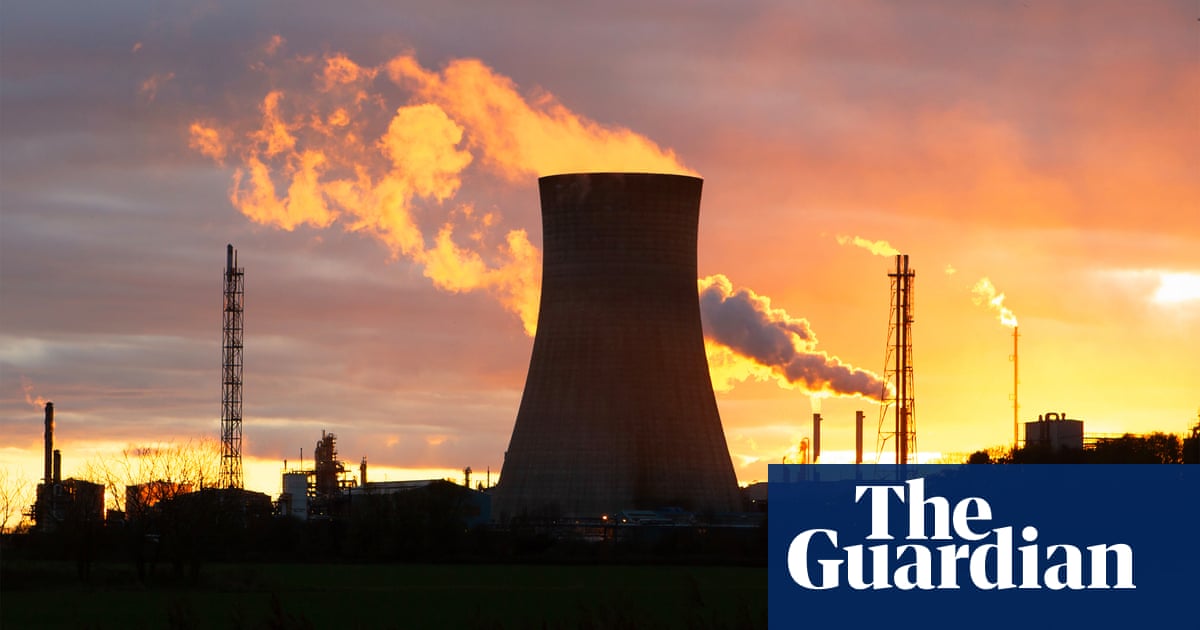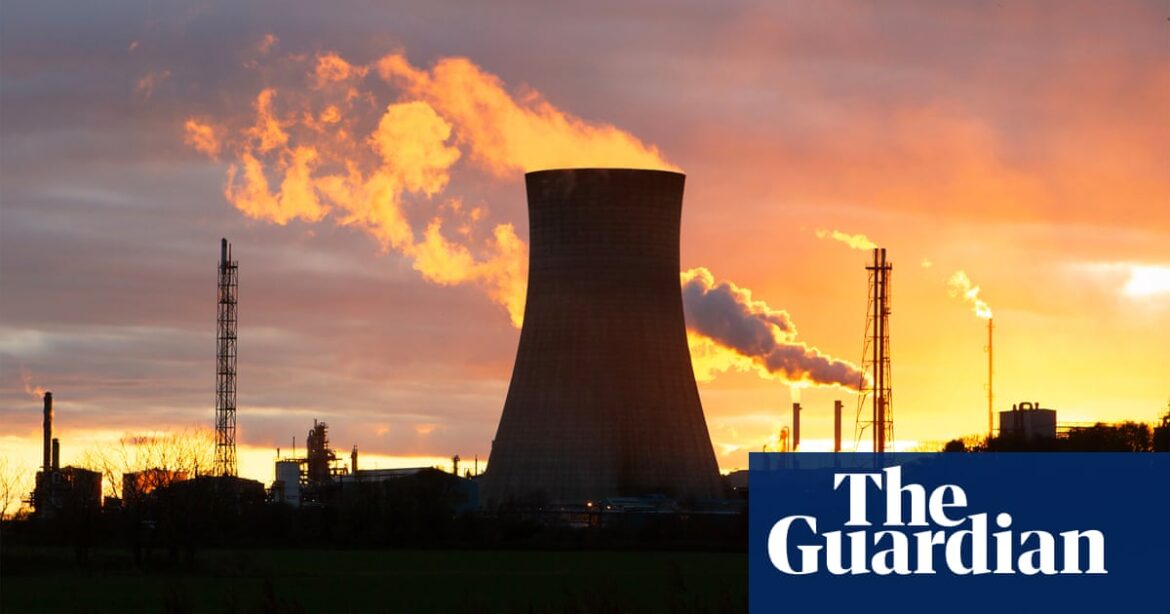
The UK’s carbon emissions fell by 4% last year, according to official figures.
Provisional statistics published on Thursday by the Department for Energy Security and Net Zero (DESNZ) show UK territorial greenhouse gas emissions were 371m tonnes carbon equivalent (MtCO2e) in 2024, down from 385 MtCO2e in 2023.
Emissions were 54% lower than they were in 1990, DESNZ said.
Greenpeace UK’s policy director, Doug Parr, gave a guarded welcome to the announcement. “This good news is the latest demonstration that the UK’s efforts to tackle climate change are working, despite what some politicians on the right might try and make you believe,” he said.
He noted though that while emissions were falling, the UK was still dependent on “expensive and polluting gas” for energy.
“This is driving up the cost of household energy bills, controlling the price of electricity and leaving us beholden to gas-exporting countries who may not have our best interests at heart,” he said.
“The government must put a stop to the great gas rip-off, and rapidly make renewables the backbone of our energy system to lower our bills for good.”
DESNZ said “decreased gas and coal use in the electricity supply and industry sectors” had driven the fall in emissions, with electricity supply emissions down 15% and industrial emissions down 9%.
The closure of the UK’s last coal-fired power station in September and an expansion in renewable energy played a significant role, officials said, as did higher electricity imports and the winding down of blast furnaces for the steel industry.
The largest source of emissions continued to be the transport sector, which accounted for 30% of the total, but a fall in the use of diesel-powered cars on the UK’s roads led to a 2% fall, according to the statistics.
Emissions from the buildings and product use sector – the second most significant, accounting for 21% of the total – rose by 2% “due to higher gas use likely driven by an easing of energy and other cost pressures”, according to officials.
Ironically, climate change may also have contributed to the fall. “Above average temperatures and fewer heating degree days since 2022 has kept residential buildings emissions down relative to earlier years,” the statistical release said. “If weather conditions for both 2023 and 2024 had followed long-term trends, there would have been a 4% increase in residential buildings emissions estimates.”
The estimates cover seven gases which contribute to a “greenhouse effect” in the earth’s atmosphere – carbon dioxide (CO2), methane, nitrous oxide, hydrofluorocarbons, perfluorocarbons, sulphur hexafluoride and nitrogen trifluoride. CO2 made up about 78% of the 2024 total.
DESNZ has been contacted for comment.
Source: theguardian.com



